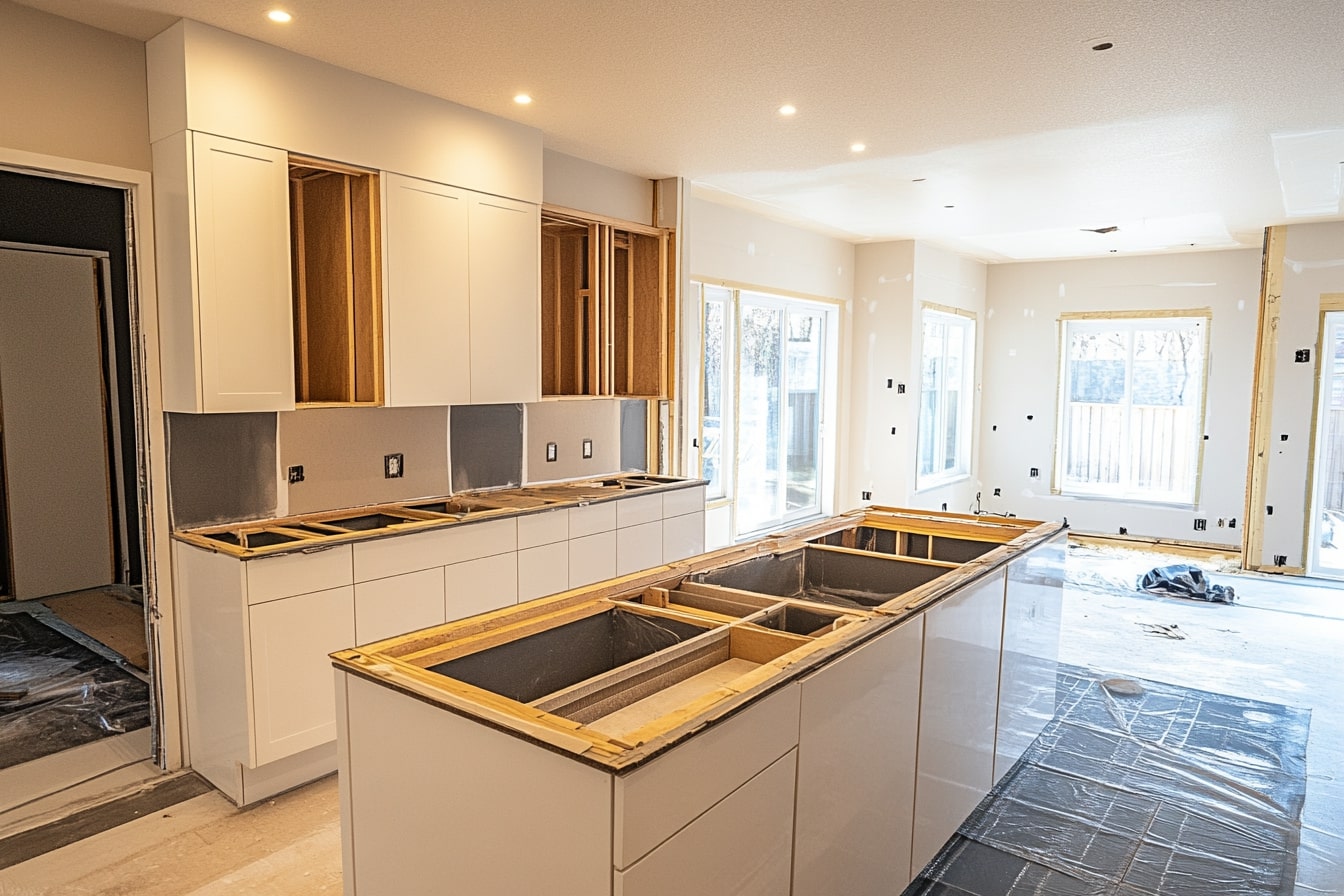Things About Reverse Mortgages That May Surprise You
Reverse mortgages remain one of the most misunderstood financial products available to seniors today. While they offer a way for homeowners aged 62 and older to tap into their home equity without selling, many potential borrowers are unaware of significant changes to these loans over the past decade. From unexpected eligibility requirements to little-known repayment options, there are several aspects of reverse mortgages that might change how you view this retirement planning tool.

A reverse mortgage allows eligible homeowners to convert part of their home equity into cash while continuing to live in their homes. Unlike traditional mortgages where you make monthly payments to a lender, with a reverse mortgage, the lender pays you. This financial product has evolved significantly over the years, yet many misconceptions persist. Let’s explore some surprising aspects of reverse mortgages that might reshape your understanding of this financial option.
What You Might Not Know About Eligibility Requirements
Contrary to popular belief, qualifying for a reverse mortgage involves more than just age restrictions. While it’s true that borrowers must be at least 62 years old, lenders also evaluate several other factors. Your home must be your primary residence, and you need to have sufficient equity—typically at least 50%.
What surprises many potential borrowers is the financial assessment introduced in 2015. Lenders now review your credit history, income sources, and monthly expenses to ensure you can maintain property tax payments, homeowners insurance, and home maintenance. If your financial situation raises concerns, lenders might require a “set-aside” portion of your loan proceeds specifically earmarked for these ongoing obligations.
Additionally, most people don’t realize that reverse mortgages require mandatory counseling from a HUD-approved counselor. This independent session ensures borrowers fully understand their obligations and alternatives before proceeding.
Unexpected Facts You Should Understand About Loan Costs
The cost structure of reverse mortgages often catches borrowers off guard. Unlike conventional mortgages, reverse mortgages come with several upfront costs that can significantly impact the loan’s value. The most substantial expense is often the mortgage insurance premium (MIP), which equals 2% of your home’s appraised value at closing, followed by ongoing annual MIPs of 0.5% of the outstanding loan balance.
Origination fees can reach up to $6,000, depending on your home’s value. Closing costs covering appraisals, title searches, and inspections typically range from $2,000 to $3,000. What’s particularly surprising is that these fees are usually financed through the reverse mortgage itself, meaning they accrue interest over time and reduce your available equity.
Another overlooked aspect is the interest rate structure. While fixed-rate options exist, they typically provide less flexibility in how you receive funds. Variable-rate reverse mortgages offer more payment options but come with the uncertainty of changing rates over time, which can significantly impact how quickly your loan balance grows.
Insights on Payment Options That Could Change Your Perspective
Many people assume reverse mortgages provide funds as a lump sum payment, but this represents just one of several available disbursement methods. What’s surprising to many potential borrowers is the flexibility in how they can receive their funds.
The line of credit option might be the most advantageous yet underutilized payment method. Unlike a traditional HELOC, an unused reverse mortgage line of credit actually grows over time at the same rate as the loan’s interest rate plus the mortgage insurance premium. This means your available credit increases regardless of your home’s market value—a feature that can provide significant financial security during retirement.
Term and tenure payment options also surprise many borrowers. Term payments provide fixed monthly amounts for a specific period, while tenure payments continue for as long as at least one borrower lives in the home as their primary residence. These structured payment methods can help create predictable income streams that complement Social Security and other retirement benefits.
Non-Borrowing Spouse Protections You May Not Be Aware Of
One of the most significant changes to reverse mortgages in recent years involves protections for non-borrowing spouses. Historically, if only one spouse was listed on the reverse mortgage and that person died or moved into long-term care, the non-borrowing spouse could face foreclosure.
Since 2014, HUD has implemented safeguards allowing eligible non-borrowing spouses to remain in the home after the borrowing spouse’s death, provided certain conditions are met. This policy change addressed one of the most problematic aspects of reverse mortgages that had led to foreclosures and financial hardship for surviving spouses.
What many don’t realize is that these protections come with specific requirements. The couple must have been married before the loan closing, and the non-borrowing spouse must be identified during the application process. Additionally, the non-borrowing spouse cannot access any remaining loan proceeds after the borrowing spouse’s death but can continue living in the home without repaying the loan as long as they maintain the property and meet other obligations.
Repayment Scenarios That Often Surprise Borrowers
Perhaps the most misunderstood aspect of reverse mortgages involves repayment triggers. Many people incorrectly believe that the bank automatically takes ownership of the home when the loan comes due. In reality, the borrower (or their heirs) retains ownership and has several options when the loan becomes payable.
When the last borrower moves out or passes away, heirs typically have up to six months to decide how to handle the property, with possible extensions up to 12 months. They can choose to pay off the loan and keep the home, sell the home to repay the loan (keeping any proceeds exceeding the loan balance), or simply walk away and let the lender sell the property.
What surprises many is that reverse mortgages are non-recourse loans. This means that even if the home’s value declines below the loan balance, neither the borrower nor the heirs will ever owe more than the home is worth at the time of repayment. The FHA insurance that borrowers pay for provides this protection, essentially guaranteeing that the loan can never become “underwater” in a way that creates personal liability.
Comparing Major Reverse Mortgage Programs and Providers
Understanding the different types of reverse mortgages available can help potential borrowers make more informed decisions about which option might best suit their needs.
| Program Type | Key Features | Loan Limits (2023) | Best For |
|---|---|---|---|
| HECM (Home Equity Conversion Mortgage) | FHA-insured, most common type | $1,089,300 | Homeowners seeking government protections |
| Proprietary Reverse Mortgages | Higher lending limits, fewer restrictions | No federal limit | High-value homes above HECM limits |
| Single-Purpose Reverse Mortgages | Restricted use (taxes, repairs) | Varies by program | Lower-income seniors with specific needs |
Prices, rates, or cost estimates mentioned in this article are based on the latest available information but may change over time. Independent research is advised before making financial decisions.
How Reverse Mortgages Interact With Other Benefits
A lesser-known aspect of reverse mortgages is how they interact with government benefits. Many seniors are surprised to learn that reverse mortgage proceeds generally don’t affect Social Security or Medicare benefits. The funds are considered loan advances rather than income, which helps preserve eligibility for these crucial programs.
However, need-based benefits like Medicaid and Supplemental Security Income (SSI) can be affected if loan proceeds accumulate in your bank account. Any money received from a reverse mortgage must typically be spent in the same month to avoid counting toward resource limits for these programs. This distinction requires careful planning, especially for those relying on means-tested government assistance.
Another surprise for many borrowers is that reverse mortgage interest isn’t tax-deductible until the loan is partially or fully repaid. This differs from traditional mortgages where interest deductions can be claimed annually, potentially affecting tax planning strategies during retirement.
Understanding these complex interactions between reverse mortgages and various benefit programs is essential for making informed decisions about whether this financial tool aligns with your broader retirement strategy and needs.




